Plextor M5S 256GB Review
by Kristian Vättö on July 18, 2012 3:00 AM ESTPerformance Over Time & TRIM
Plextor's M3 and M3 Pro performed well in our torture testing. After 20 minutes of torture their performance was still bearable, which is what matters for consumer workloads (although even that is very extreme). Plextor relies on idle time garbage collection, so the performance restores when the drive is doing nothing. Plextor has always promoted their "True Speed" technology and I can see why. In fact, dirty state performance is one of the key features of the M5S as shown on Plextor's website.
I was excited to see if M5S brought even better garbage colletion as Plextor is advertising it so heavily. To begin testing, I ran HD Tach on a secure erased drive to get the baseline performance:
Next I tortured the drive by filling it with sequential data and then exposed it to 20 minutes of 4KB random writes (QD=32, LBA 100%):
Write performance drops to as low as 50MB/s for the first LBAs but the average write speed is up by 10MB/s compared to the M3.
I let the drive sit idle for 30 minutes and reran HD Tach:
Performance is over 90% of clean state performance, which is very good. With more idle time and sequential writes, performance shhould get even closer to clean state numbers.
Since 20 minutes of torture is not enough to put the M5S in its worst possible state, I secure erased the drive, filled it with sequential data and ran our torture test for 60 minutes:
And performance drops significantly as expected.
I again let the drive idle for 30 minutes and reran HD Tach after that:
This is pleasant news. The M5S came from worst state to over 70% of clean state performance in only 30 minutes. For comparison, the M3 Pro only restored to 46% of clean state performance and it was idling for nearly two hours.
Finally, I secure erased the drive one more time, filled it with sequential data and tortured for 60 minutes. After that, I formatted the drive in Disk Management to see if TRIM works properly (and it does):
Write Amplification
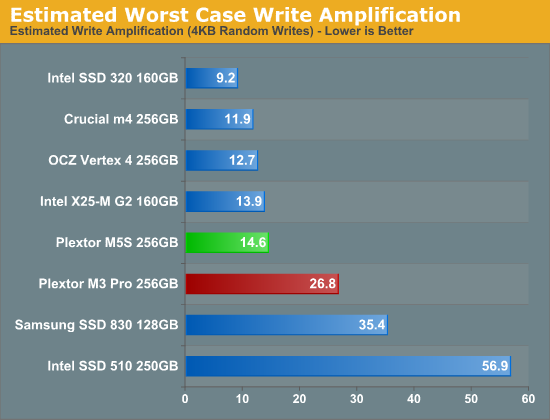
Write amplification has been reduced dramatically. The M3 Pro had relatively high worst case write amplification, although it was still acceptable. The M5S takes write amplification down to the level of most other non-SandForce drives.
Conclusion
I'm pleased that Plextor has paid extra attention to the garbage collection in the M5S. The garbage collection in the M3 and M3 Pro was already good, but not perfect. The garbage collection in M5S is very aggressive if the drive is put into an extremely dirty state, which is good news because the most noticeable difference in performance comes when the drive is at its worst state.
I'm even happier about the fact that better garbage collection did not come at the expense of write amplification. In fact, the M5S almost halved estimated worst case write amplification compared to the M3 Pro. Aggressive garbage collection can come with serious downsides if not applied correctly. Plextor's approach has improved both garbage collection and write amplification, which is the optimal way when looking at the big picture.


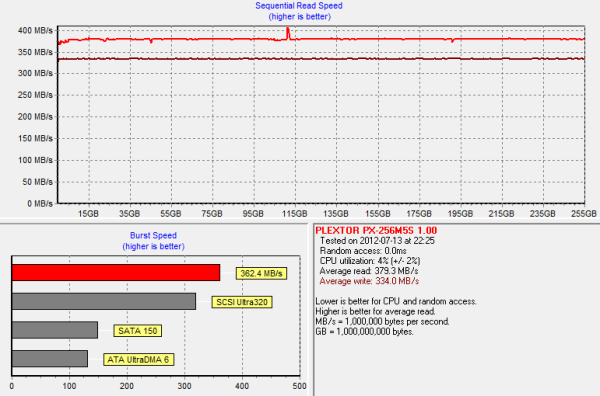
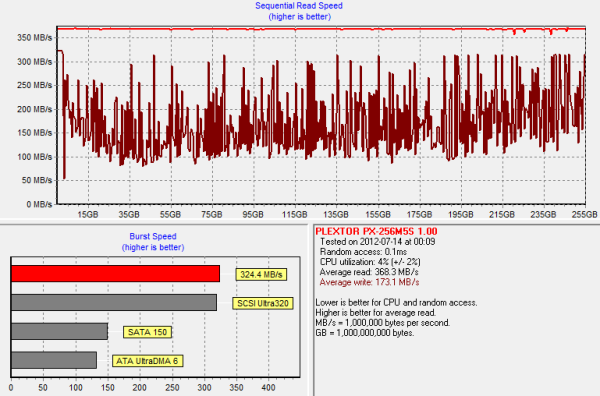
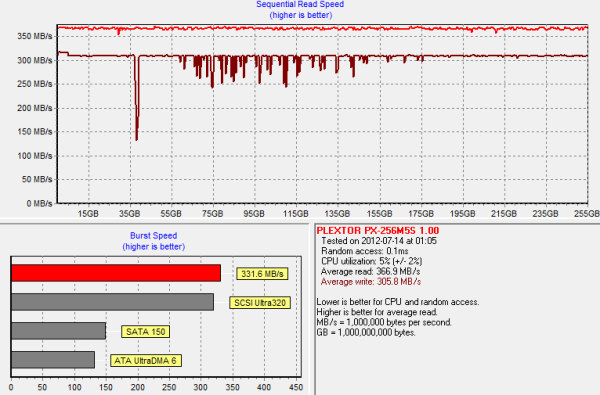
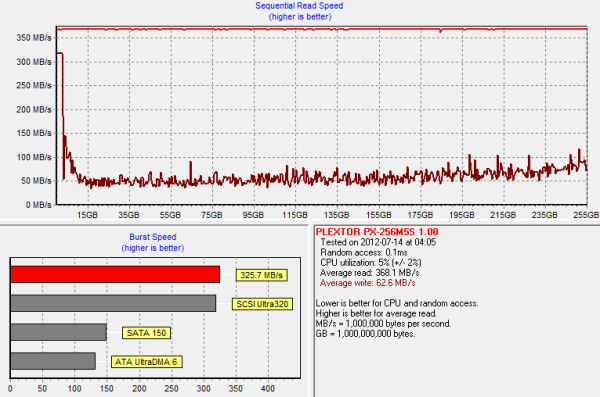
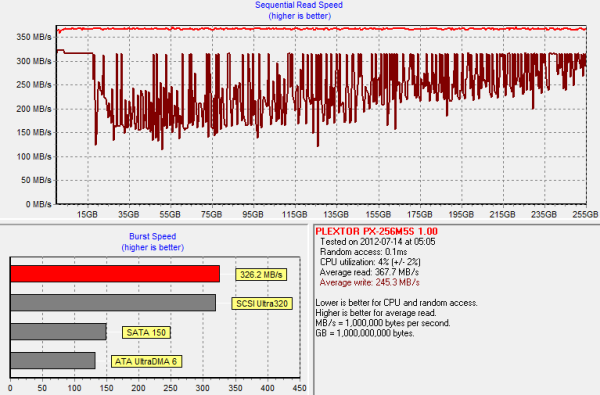
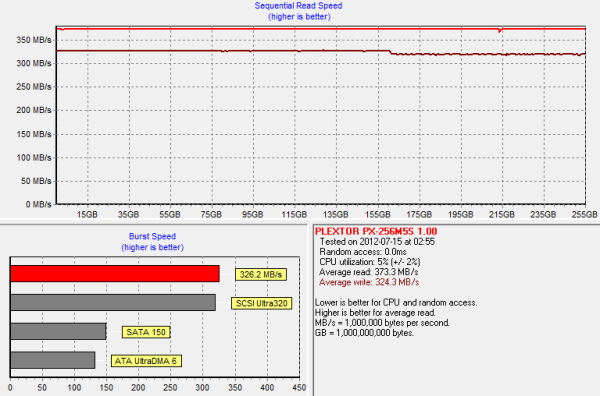








43 Comments
View All Comments
shodanshok - Wednesday, July 18, 2012 - link
Hi Kristian,thank you for your reply.
I understand that measuring WA is your "special sauce" (anything to do with SMART 0xE6-0xF1 attributes ? ;)), but the interesting thing is the Plextor was able to minimize WA while, at the same time, maximize idle GC efficiency.
Other drivers that heavily use GC (eg: Toshiba and previously Indilinx controllers) seems to cause a much higher WA.
Thank you for these comprehensive review.
sheh - Thursday, July 19, 2012 - link
Thanks.I have to say, though, that it's difficult to give credence to data that is the result of undisclosed calculations, and not even by the hardware manufacturers.
Kristian Vättö - Thursday, July 19, 2012 - link
The method we use was disclosed by a big SSD manufacturer a few years ago. It does not rely on SMART or power consumption, and it can be run on any drive.If we revealed the method we use, we would basically be giving it out to every other site. Tech industry is quite insolent about "stealing" nowadays, getting content from other sites without giving credit seems to be fine by today's standards.
Also, our method is just one way of estimating worst case write amplification.
shodanshok - Thursday, July 19, 2012 - link
Hi KristianI totally understand your point.
Thank you for these great reviews ;)
sheh - Thursday, July 19, 2012 - link
I can't say I understand this logic, but so be it. Thanks for replying. :)jwilliams4200 - Sunday, July 22, 2012 - link
Does it work for Sandforce SSDs? Because I noticed your WA chart does not have any Sandforce SSDs.Are you just measuring the fresh out-of-box (or secure erase) write speed with HD Tune, then torturing the drives and then measuring the worst case write speed with HD Tune? Then saying WA = FOB write speed / worst case write speed ?
If that is what you are doing, then I don't think it is very accurate. Any SSDs that have aggressive background garbage collection could make the "worst case" write speed fluctuate or stabilize at a value that does not reflect the worst case write amplification.
Kristian Vättö - Sunday, July 22, 2012 - link
SandForce drives break the chart, hence I couldn't include any. SandForce drives typically have worst case WA of around 2x, though.I still cannot say what our testing methods are. Anand has made the decision that he doesn't want to share the method and I have to respect that. You can email him and ask about our method - I can't share our methods without his permission.
In the end it's an estimation, nothing more. How accurate, it's hard to say as it will vary depending on usage.
jwilliams4200 - Monday, July 23, 2012 - link
So it is TERRIBLY inaccurate, because Sandforce SSDs actually have worst case write amplification of well over 10, just like other SSDs.In that case, I assume I was correct that you are just using ratio of write speeds from HD Tune, but since HD Tune writes highly compressible data, you are getting bogus results for Sandforce SSDs (actually, I should say, even more inaccurate for Sandforce SSDs than for non-Sandforce)
Anand really needs to reconsider some of his policies. This "secret" test method is just absurd.
jwilliams4200 - Wednesday, July 18, 2012 - link
It all hinges on finding a way of measuring "flash writes", the amount erased/written to flash chips, as opposed to "host writes", which is easy to measure (the amount your computer writes to the SSD).Usually you can find or guess which one of the SMART attributes represents flash writes. You can start by doing large sequential writes to the SSD (for which the WA should be close to, but a little over, 1) and monitoring the SMART attributes to see which one changes like it is monitoring flash writes.
I remember some time ago an anandtech article mentioned another way of doing it. I'm not sure if they are using this method now or not (I have my doubts about the accuracy of the method). It had to do with measuring the power usage and somehow correlating that to how much writing to flash is occurring. The reason I have doubts about the accuracy of the method is that it would require measuring a sort of "baseline" power consumption when writing to the flash, and to get the baseline you would have to control the conditions of the write (for example, doing it write after a secure erase) in order that you can guess/assume what the WA is, so that you will then be able to compute the WA in more complicated conditions based on the "baseline". But that is rather like pulling yourself up by your own bootstraps, so I would not trust the results.
The first method I described is the way to go, unless the SSD does not have a SMART attribute that measures flash writes.
cserwin - Wednesday, July 18, 2012 - link
I have to say seing the Plextor brand name resurface kindles a warm, happy feeling.There was a time when they made the optical drives to have. A Plextor CD-ROM, a 3DFX Voodoo, a 17" Sony Trinitron, IBM Dekstar...
Good luck, Plextor. Nice to see the old school still kickin.